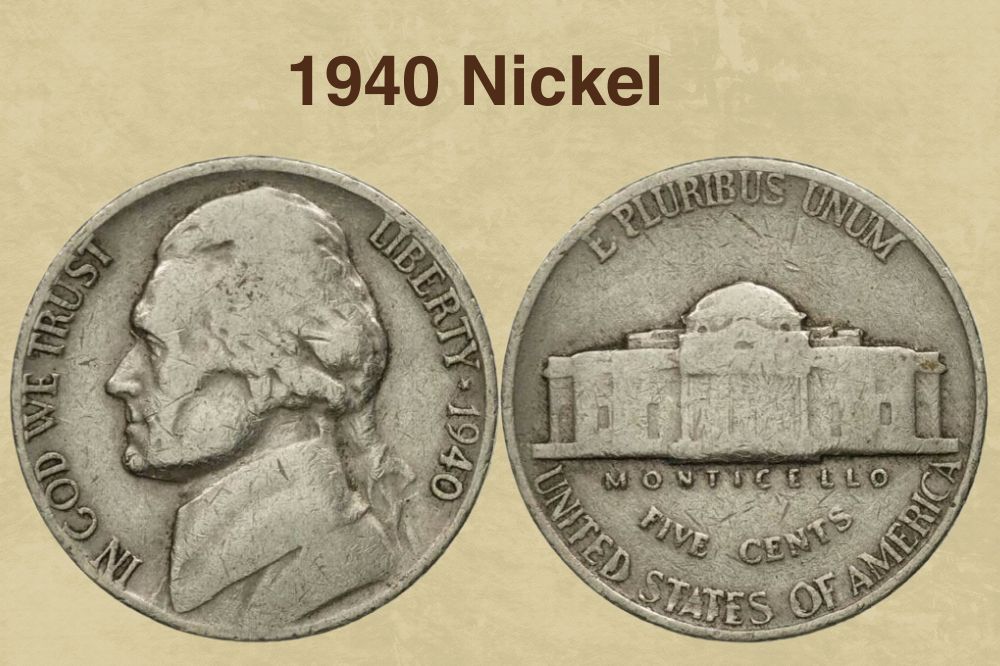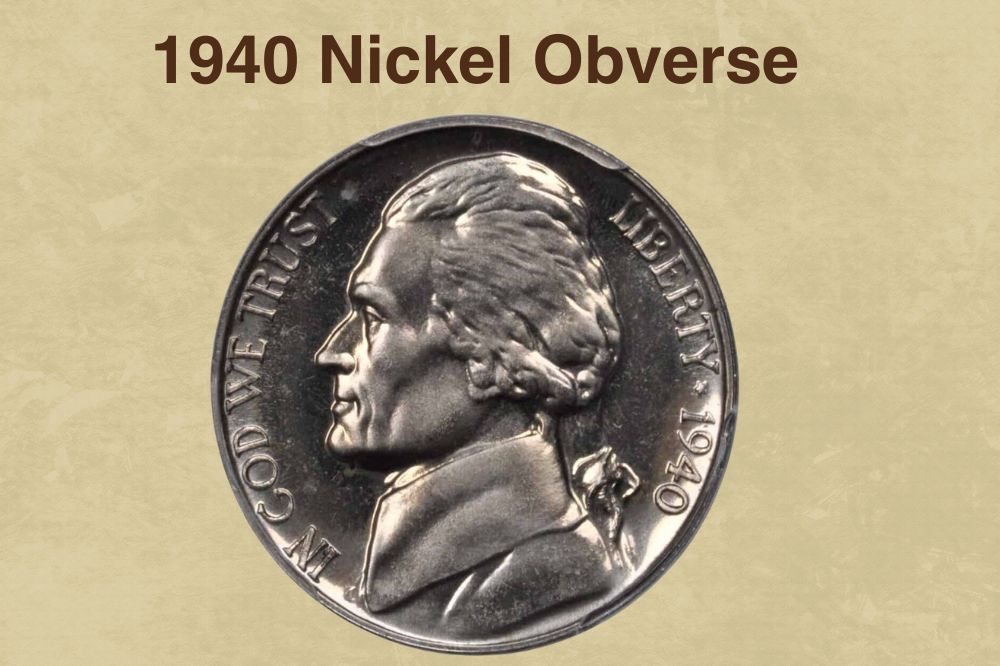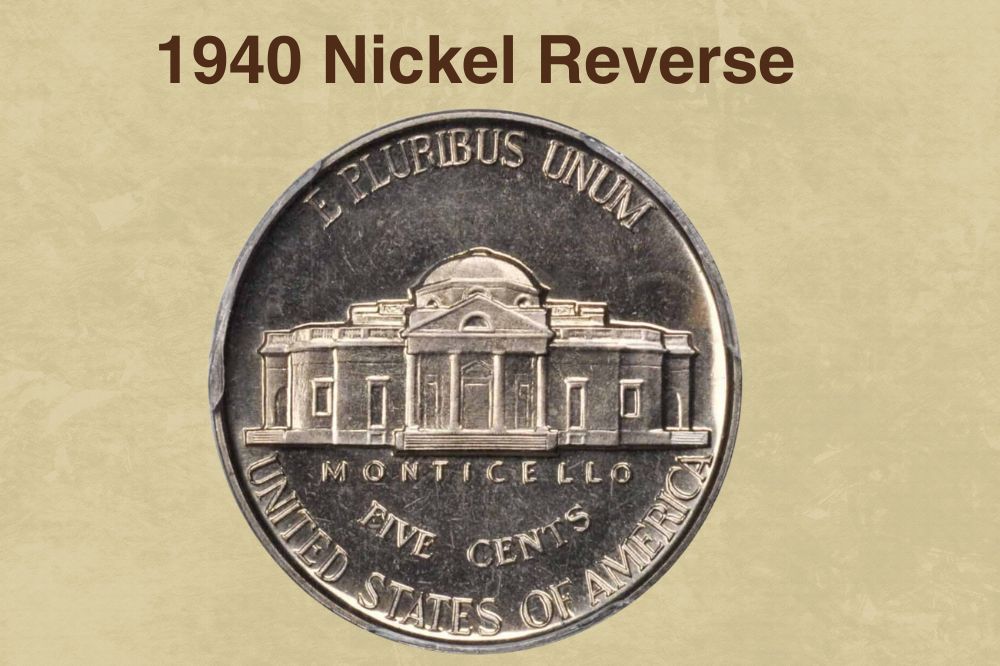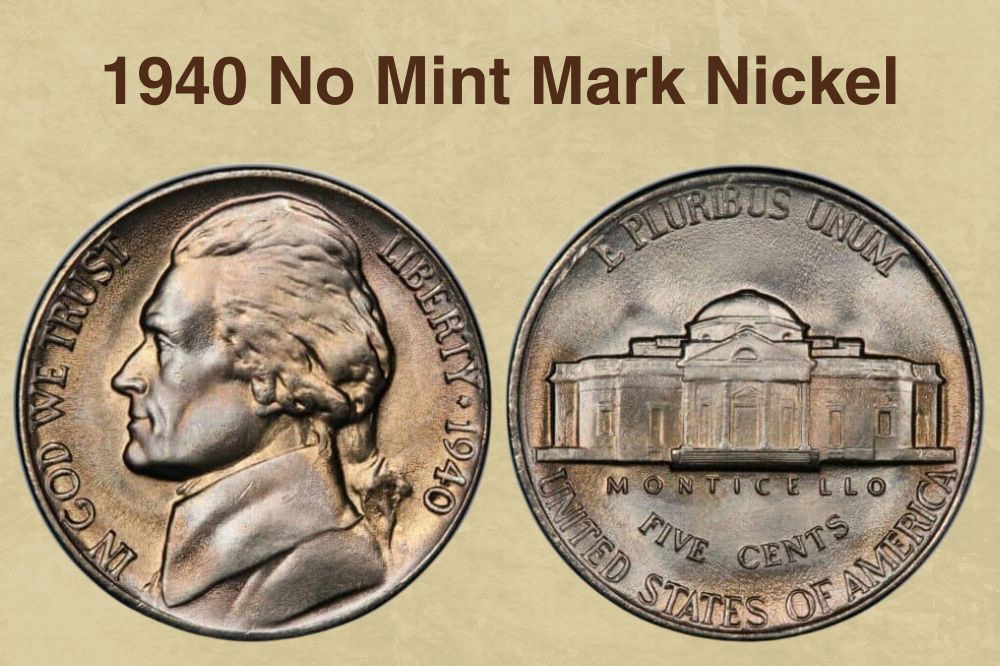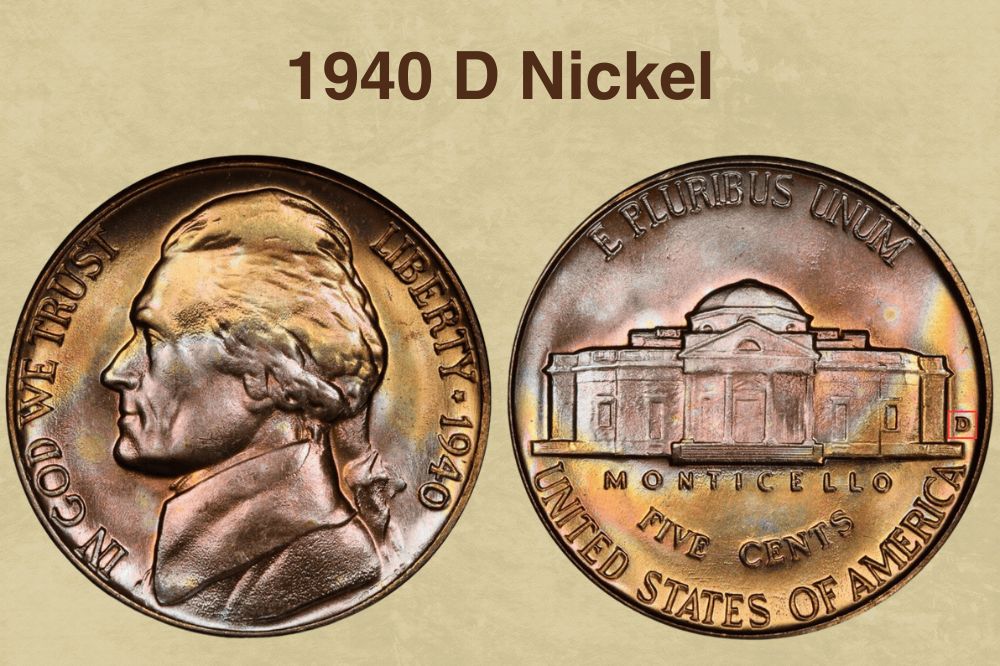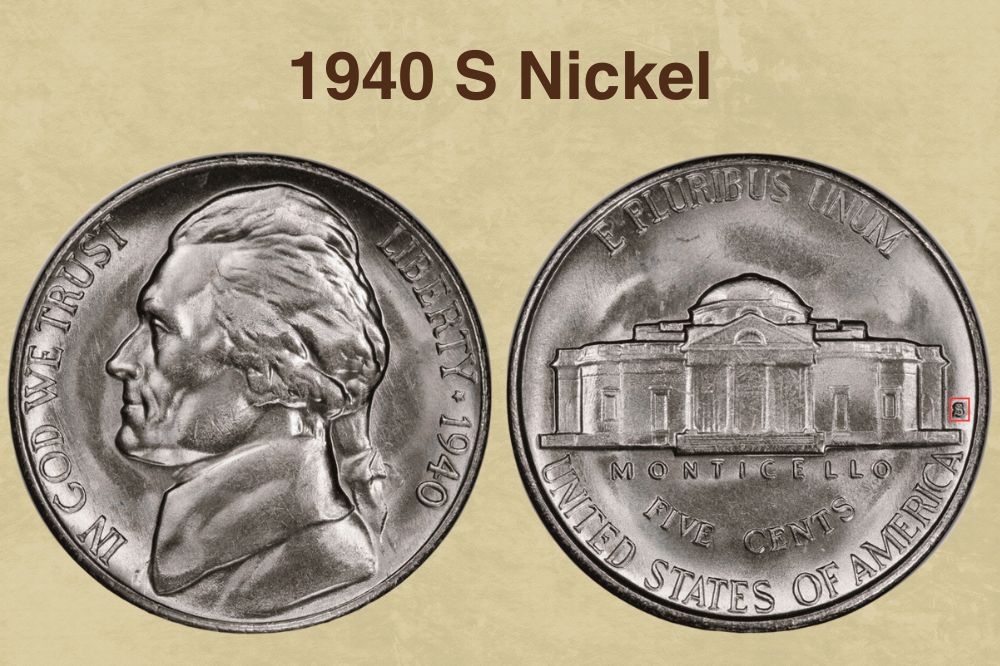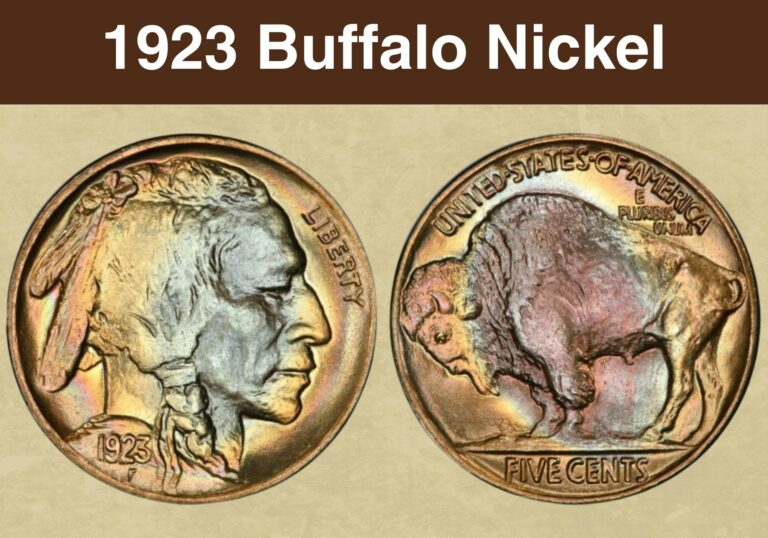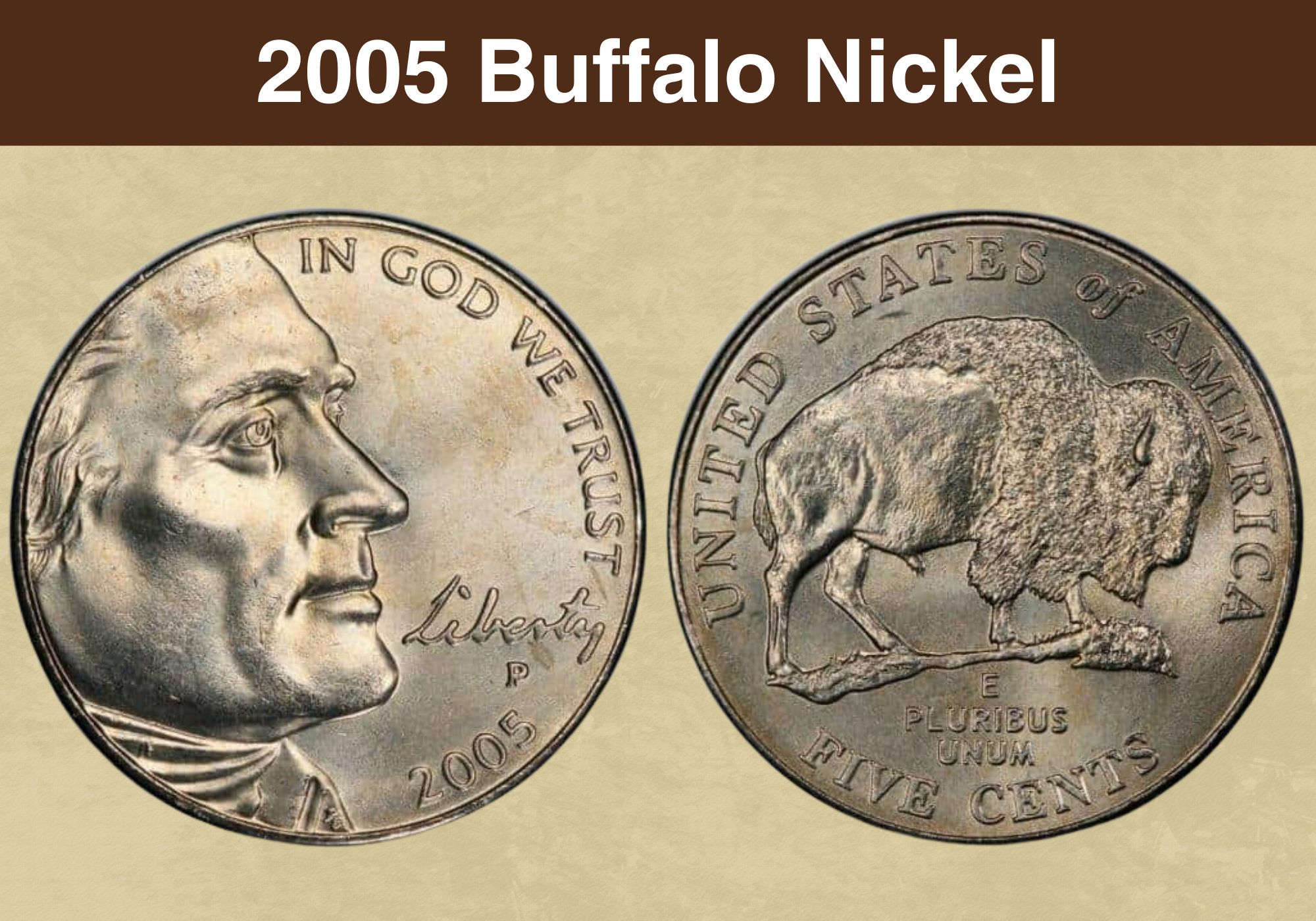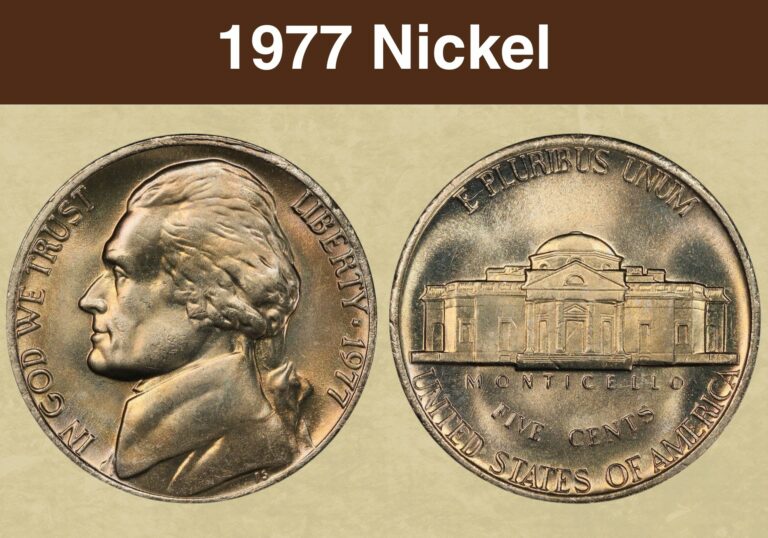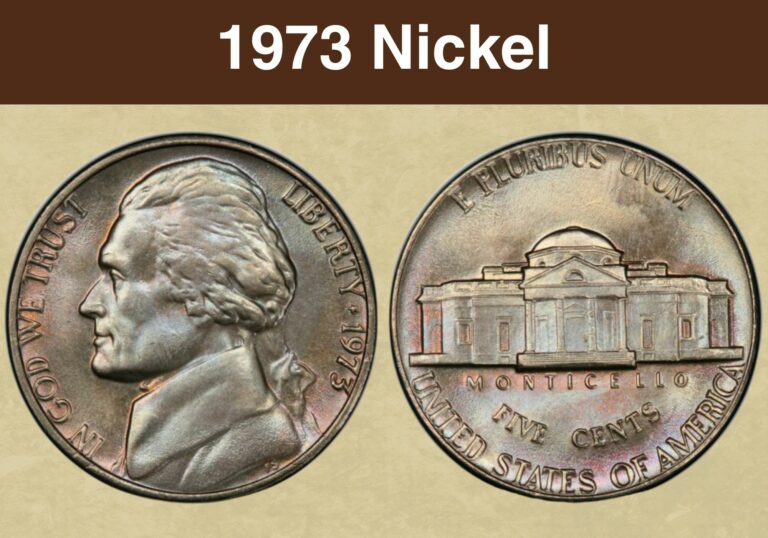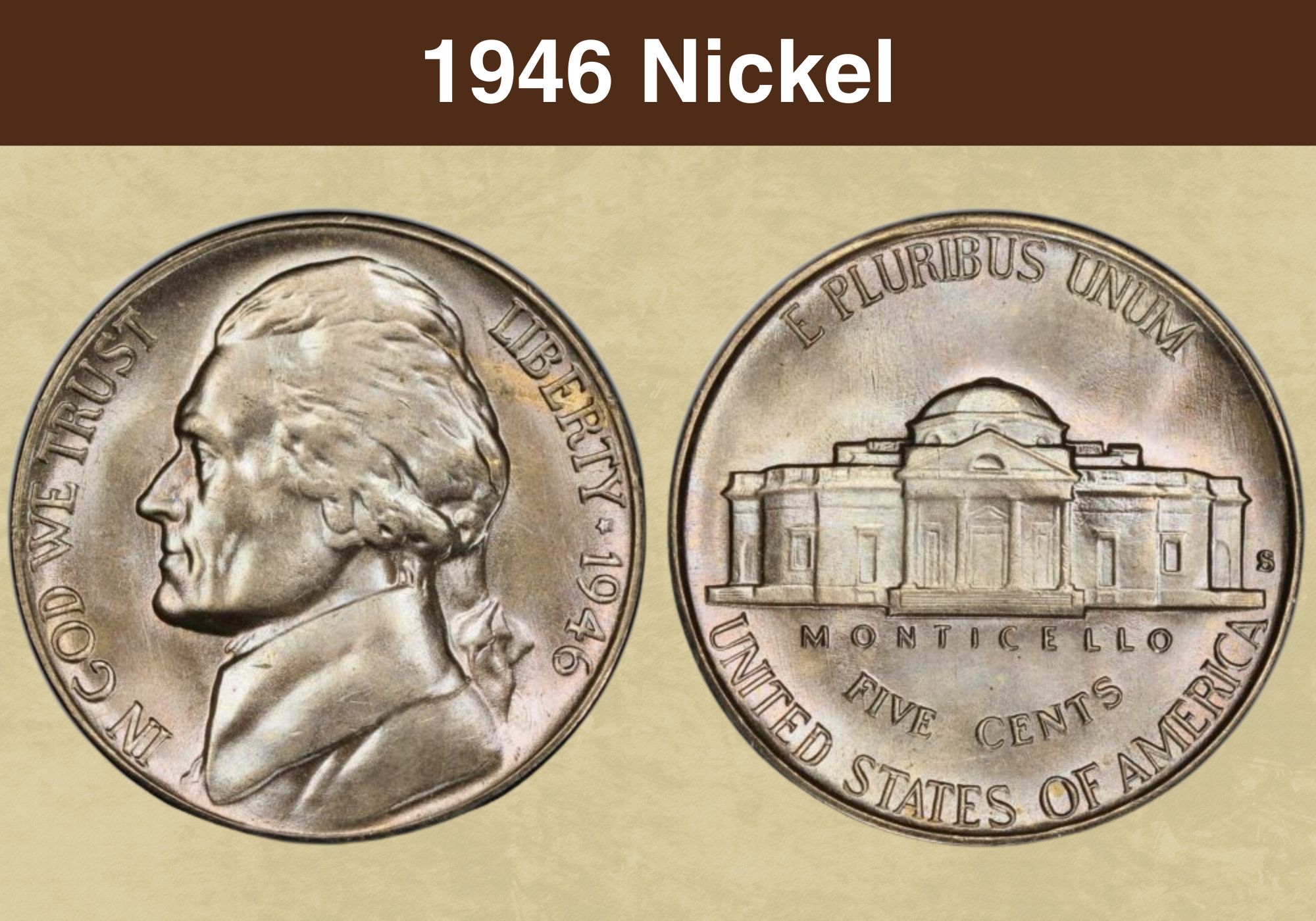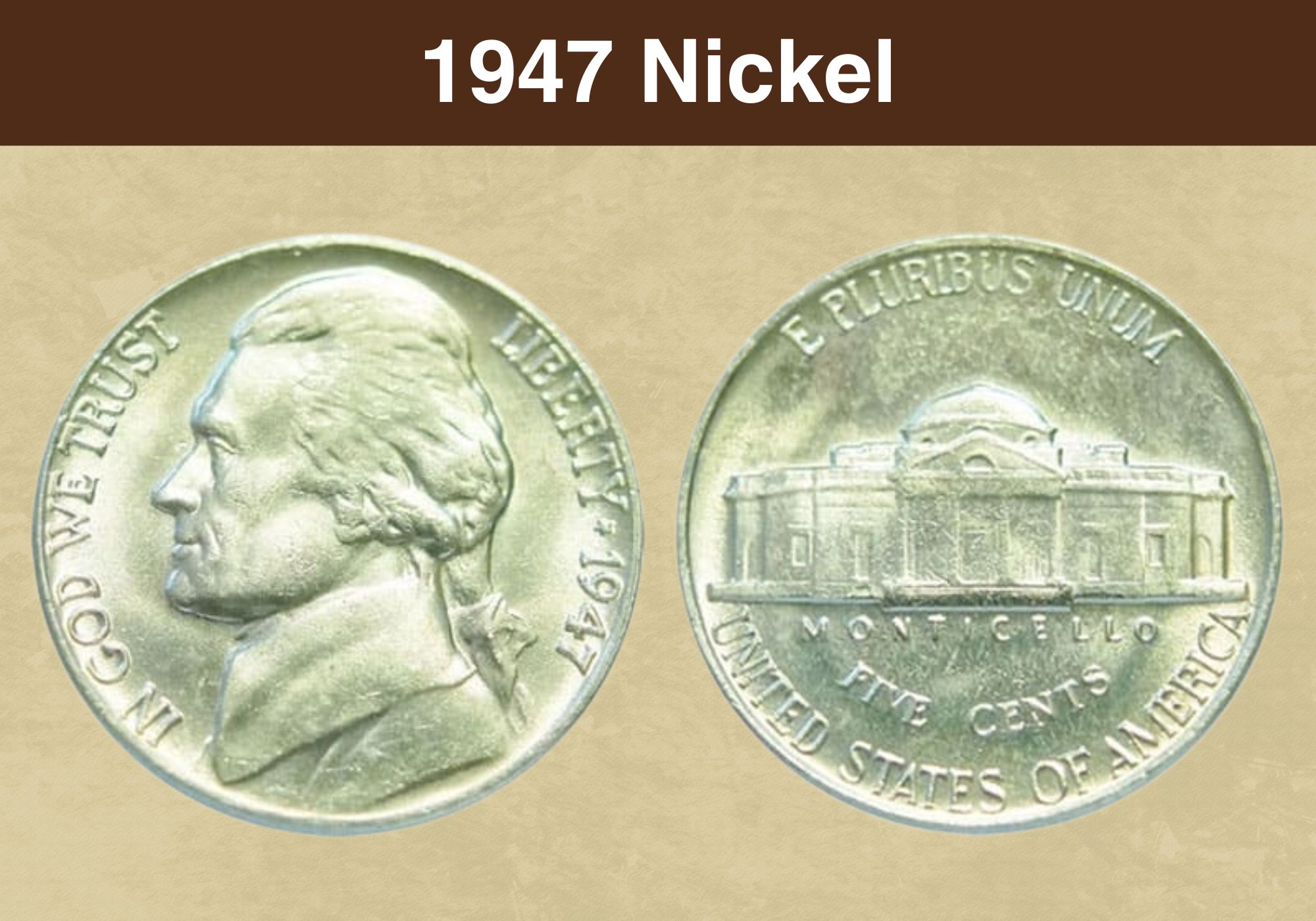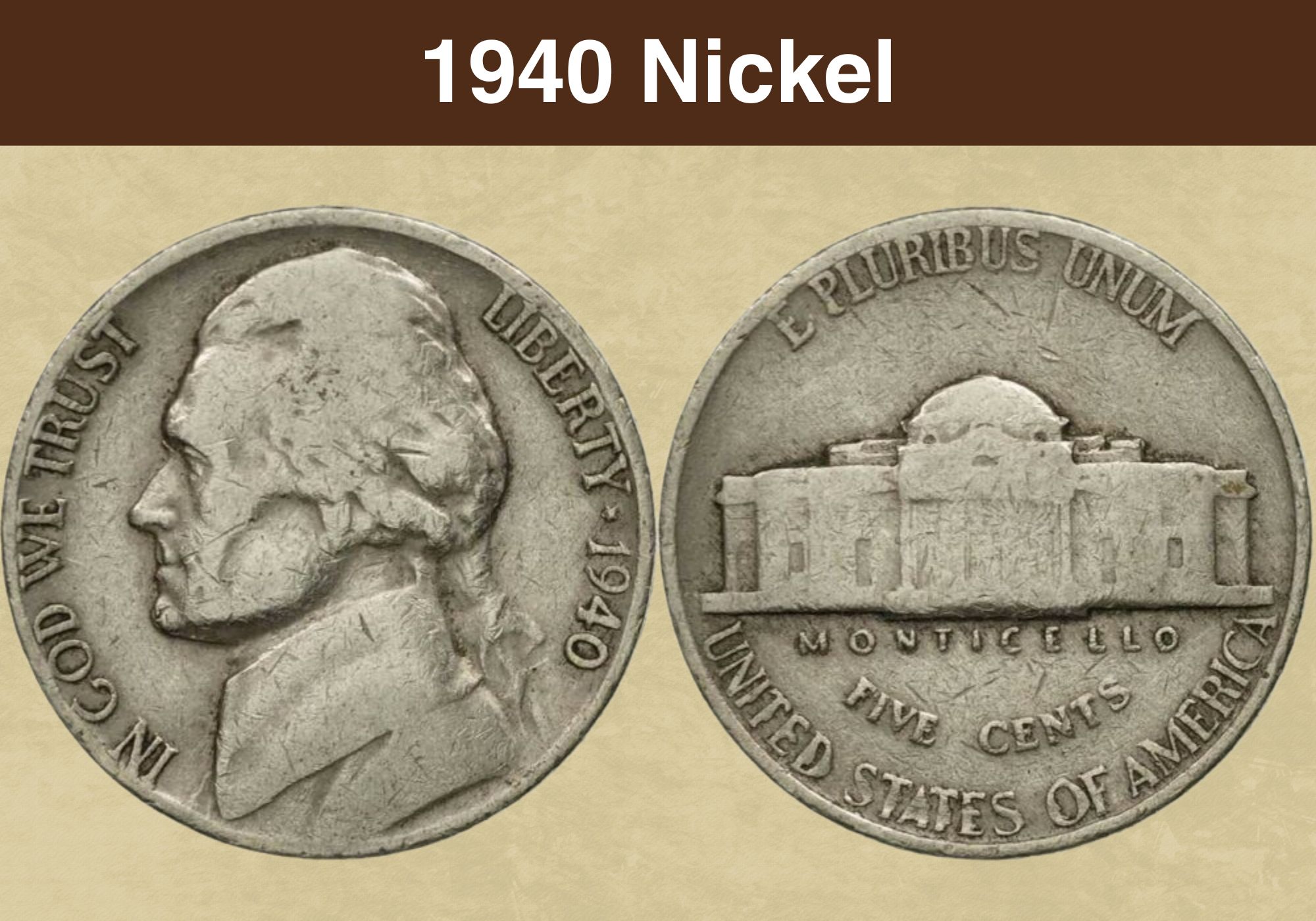
Coin Value Contents Table
Are you interested in collecting Jefferson nickels dated 1940 and are curious how much they are worth?
Or did you discover a 1940 nickel and are excited to find out how much you can sell this old coin for?
Either way, you’ve come to the right place! I wrote this article to help collectors like you understand the 1940 nickel value. By knowing how much this coin is worth, you can make an informed decision whether you are an interested buyer or seller.
You will learn about the unique features to identify in a 1940 nickel worth money and how to grade your Jefferson nickel. You will also discover the minting errors that can increase the value of your nickel.
Let’s get started!
1940 Nickel Value Chart |
||||
| Mint Mark | Good | Fine | Extremely Fine | Uncirculated |
| 1940 No Mint Mark Nickel Value | $0.10 | $0.10 | $0.25 | $100 |
| 1940 D Nickel Value | $0.10 | $0.20 | $0.50 | $125 |
| 1940 S Nickel Value | $0.10 | $0.20 | $0.60 | $175 |
| 1940 S (Proof) Nickel Value | – | – | – | $7,850 |
History of the 1940 Nickel
The Jefferson nickel was first struck in October 1938 and released into circulation that year.
The United States Mint was eager to replace the Buffalo nickel, which had served well for 25 years but had been difficult to mint. So after the 25-year mark had elapsed, the Mint could replace the coin without the approval of Congress.
In January 1938, the Mint held a competition to find a designer for the new coin. After reviewing various entries, they chose Felix Schlag as the winner.
The Mint commissioned Schlag to design a new nickel featuring the country’s third president, Thomas Nickel, on the obverse and his famous Monticello house on the reverse.
After many iterations and revisions, the designer finally submitted a design the Mint could accept. Production began immediately in all three mints in Philadelphia, Denver and San Francisco.
Historical accounts stipulate that collectors hoarded the Jefferson nickel, and large amounts were removed from circulation between 1938 and 1939. It was only in 1940 that the coin was widely circulated.
The Mint sharpened the nickel’s striking hub one year after production began, resulting in sharper stairs on the Monticello on subsequent coins. Earlier versions of the nickel had noticeably dull staircases.
These new, sharp steps became a subject of fascination among collectors who named them Full Steps. From then on, nickels with full steps have been considered more valuable and more collectible.
Also read: Top 10 Most Valuable Nickels Worth Money
Features of the 1940 Nickel
Now let us look at the unique features of the 1940 Jefferson nickel.
The obverse of the 1940 Nickel
On the obverse, you will find a left-facing portrait of the Founding Fathers and the third president of our country, Thomas Jefferson.
The country’s heavenly motto, IN GOD WE TRUST, appears along the coin’s rim on the left. On the right, along the rim, you will find the word LIBERTY and the date. A star separates these two letterings.
The reverse of the 1940 Nickel
The reverse of the 1940 nickel features a majestic image of Jefferson’s iconic home, the Monticello.
After several design changes, Schlag and the Mint finally agreed on a basic, forward-facing image of the home with little else happening in the background.
The aspirational motto E PLURIBUS UNUM appears around the rim at the top, while the country’s name is imprinted along the rim at the bottom.
The word MONTICELLO appears at the bottom of the steps as if underlining the president’s famous residence. This is followed by the coin’s denomination, FIVE CENTS.
Upon closer look, you will notice the mint mark on the right at the furthest end of the Monticello.
Other Features of the 1940 Nickel
The 1940 consists of 75% Copper and 25% Nickel. The coin’s designer for the obverse and reverse design is Felix Schlag.
It weighs 5 grams, measures 21.20 millimetres in diameter, and spots a plain edge.
The Mint struck the 1940 nickel in Philadelphia, Denver and San Francisco.
Nickels minted in Philadelphia do not have a mint mark, but you will notice the mint mark D and S on those minted in Denver and San Francisco, respectively. The mint mark appears on the reverse at the furthest end of the Monticello to the right.
Check out this video to learn more about the high and low point features that affects the value of a 1940 nickel.
Also read: Top 17 Most Valuable Buffalo Nickel Worth Money
1940 Nickel Grading
Interest in 1940 nickels is mostly confined to mint state. There are specific qualities you need to examine to determine whether a coin is circulated or not.
On the obverse, pay attention to Jefferson’s hair. In mint state, there should be clear signs of frost, an important indication of an uncirculated coin. The frost wears out and eventually disappears in circulated coins.
You should also look at the area above Jefferson’s eye, prone to early signs of wear and tear. There should be little to no wear here for a coin to be designated as a mint state.
Lastly, the collar and shoulder areas also wear pretty fast. So check here as well to ensure there is no loss of lustre.
Turn your coin over on the reverse side. The triangle at the top of Monticello’s front door, the columns and the building’s foundation are high points prone to wear. Be sure to inspect these spots for signs of lustre loss.
Here are more tips on how to grade your 1940 Jefferson nickels.
| # | Grade |
|---|---|
| 1 | Basal State-1 |
| 2 | Fair |
| 3 | Very Fair |
| 4, 5, 6 | Good |
| 7, 8, 10 | Very Good |
| 12, 15 | Fine |
| 20, 30 | Very Fine |
| 40 | Extremely Fine |
| 50 | About Uncirculated |
| 60 | Mint State |
| 65 | Mint State |
| 70 | Mint State |
Please check our grading guides to know your coin scale, It’s the necessary step to know the exact value of your coin.
Check out now: How to Grade Jefferson Nickel?
1940 Nickel Value Guides
The U.S. Mint struck the 1940 nickel in large numbers, producing approximately 260 million coins that year.
As a result, Jefferson’s nickels from 1940 are common, even in mint states. However, coins in gem condition are scarce and can take lots of time and effort to find.
There are four varieties of the 1940 nickel whose value we will explore. These are:
- 1940 No Mint Mark Nickel
- 1940 D Nickel
- 1940 S Nickel
- 1940 S Nickel (Proof)
Let’s look at the value of each.
1940 No Mint Mark Nickel Value
With a mintage of approximately 176,485,000, the Philadelphia facility minted the highest number of nickels in 1940.
These coins are extremely common in circulated condition and easy to find in mint state. Full Step no-mint mark nickels are pretty common too.
The Mint sharpened the striking hubs in 1939. The subsequent coins, including those struck in 1940, were well done with few errors, clear design and lettering, and were overall good looking.
That said, nickels from 1940 are worth more or less their face value. Expect about $0.10 and $0.90 for a circulated coin.
Uncirculated coins lower on the grading scale are common and not worth much. For example, an MS61 is worth $1.30, while one graded MS63 is $5.
There is a slight price increase for 1940 nickels higher on the scale. You can fetch as much as $100 for one graded MS67.
According to the Professional Coin Grading Service (PCGS) records, a rare MS68 1940 Jefferson nickel was sold for $558 in 2021.
Full Step 1940 nickels are worth much more, earning up to $2,150 at grade MS67.
1940 D Nickel Value
An estimated 43,540,000 nickels were minted at the Denver facility in 1940, the second-highest mintage that year.
These coins were particularly well-struck with an attractive lustre. Therefore nickels in gem condition are easy to find, as are those with Full Step designation.
Still, due to the high mintage, circulated coins are very common, and most suffer significant wear and tear. A 1940 nickel is worth between $0.10 and $2 in circulated condition.
Mint state nickels lower on the scale are equally not worth much. One graded MS62 will bring in $3.50, while an MS65 can sell for $25. Moving up the scale, an MS67 is worth about $125.
In 2018, an eBay seller auctioned off their 1940 D nickel-graded MS67 for an impressive $795. Meanwhile, a 1940 D nickel with an MS67 Full Step designation is worth about $275.
1940 S Nickel Value
The San Francisco mint produced the least number of Jefferson nickels in 1940. An estimated 36,690,000 regular strike coins came from this facility that year, certainly not a small number.
Unlike the Denver coins, the San Francisco nickels are of noticeably bad quality. Minted from worn dies, these coins have a weak strike, low-quality lustre, die-clash marks, and noticeable artificial polishing from attempts to remove the die-clash marks from the coin.
Uncirculated coins were hoarded in large numbers, making it fairly easy to find examples of 1940 nickels in mint state. However, gem examples remain scarce due to the coin’s overall poor strike.
A Jefferson nickel from 1940 is worth between $0.10 and $1.80 in circulated condition. The value increases slightly for mint state nickels, with MS63 fetching $7 and one designated MS67 bringing in as much as $175.
One extremely rare Very Good (VG) example sold for an eye-popping $1,840 at a Heritage Auction.
Full Step 1940 S nickels are significantly more profitable, with an MS67 selling for as much as $775.
1940 S Nickel (Proof) Value
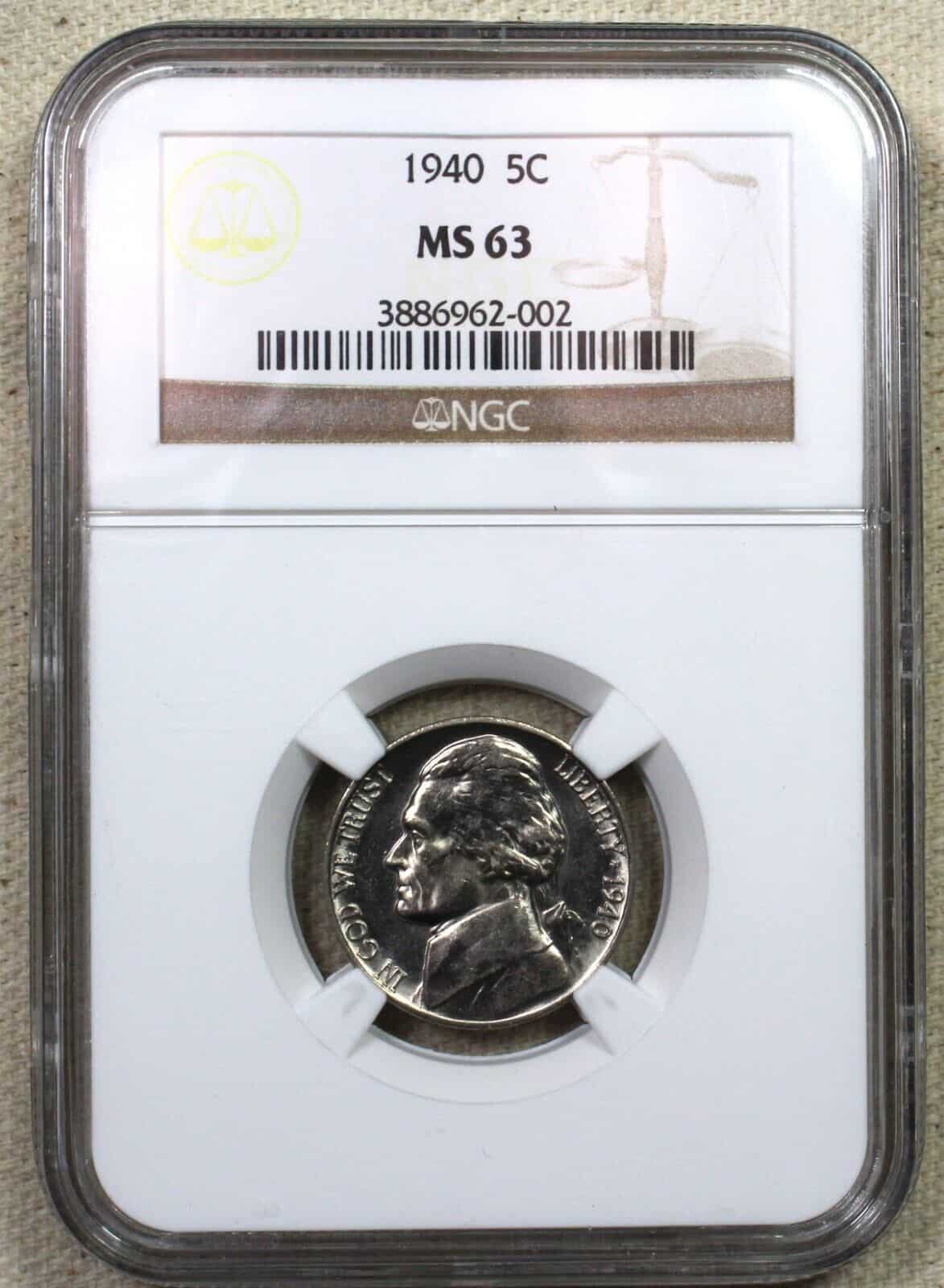
In addition to regular strike nickels, the San Francisco facility minted proof coins for collectors. Only 14,158 Jefferson nickel proofs were struck that year.
Proofs have a satin-like finish, brilliant lustre and contrast, intense details, and undeniable aesthetic appeal.
You can buy affordably proof nickels in lower grades, but the price increases significantly as you go higher on the grading scale. For example, a PF60 costs about $25, while a PF65 is worth $110. Meanwhile, a PF68 can cost as much as $7,850.
In 2005, a specimen graded PF68 was auctioned for $18,400, making this the most expensive Jefferson 1940 nickel proof sold for far.
Also read: Top 17 Most Valuable Jefferson Nickels Worth Money
Rare 1940 Nickel Error List
Due to their relatively high mintage, 1940 nickels are not worth much, especially in circulated conditions. That said, some minting errors in the series significantly bump up the value of these coins.
Let’s look at 1949 nickel errors worth money that you should pay attention to.
1940 S Repunched Mint Mark Nickel Error
A repunched mint mark error occurs when the letter punch makes a double or triple impression on the initial mint mark. The result looks like two or three overlapping mint marks.
Several repunched mint mark error coins have been discovered in the batch of 1940 nickels minted in San Francisco. The value ranges from $45 for XF45 nickels to $800 for MS68 examples. One example graded MS66 was auctioned for $450 in 2017.
1940 Full Steps Nickel Error
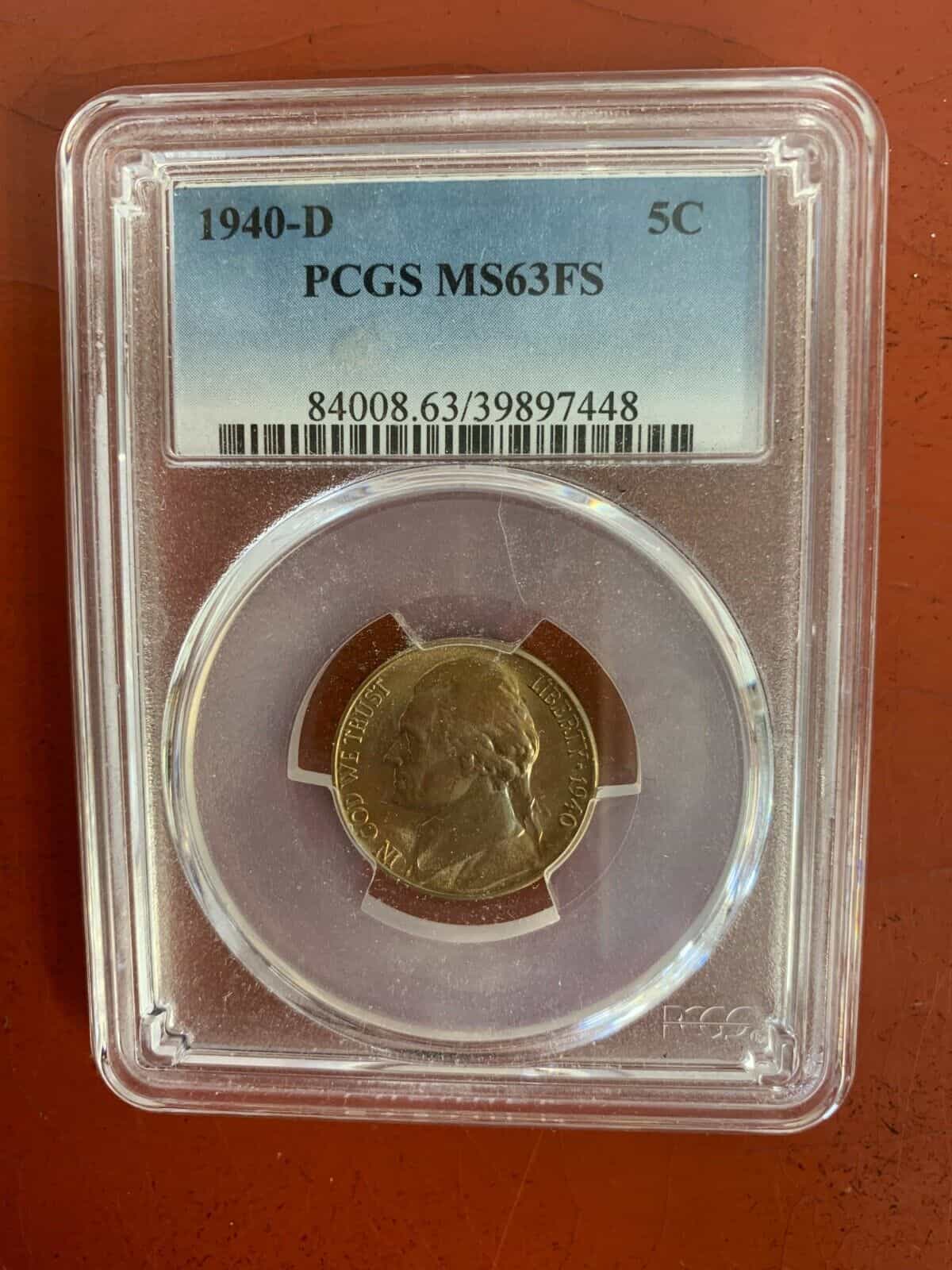
Not all 1940 Jefferson nickels feature full steps on the Monticello. Those that do are considered errors and are some of the most expensive in the Jefferson Nickels series. For example, in a 2018 auction, a 1940 D Full Step nickel was sold for a glorious $21,738.
If you are lucky to come across a 1940 nickel with six or five full steps, you should have the coin professionally certified and graded. It might be worth a fortune!
1940 Off-Center Strike Nickel Error
An off-center strike error happens when the coin is not correctly centered between the die and hub. This results in the design only being partially struck on the coin, leaving the rest of the planchet blank.
The value of this particular error depends on the off-strike percentage. The greater the percentage, the more valuable the coin. For example, a 1940 nickel with a 50% off-center strike can fetch as much as $120 compared to $20 for a 10% off-center strike.
1940 Reverse 1938 Nickel Error
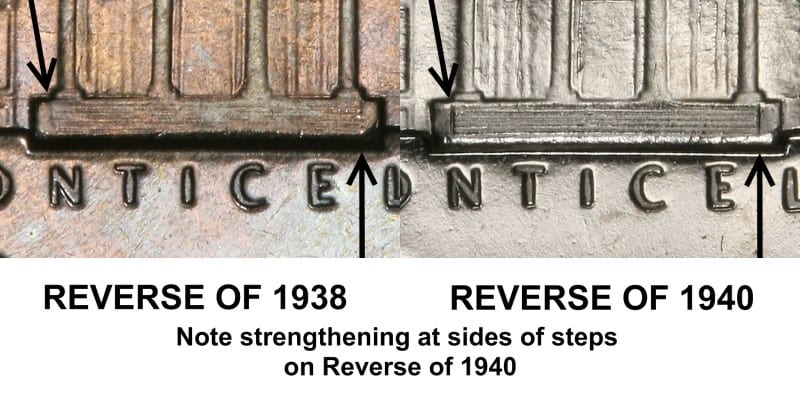
Last but not least is the reverse 1938 error found in 1940 S-proof nickels. As the name suggests, mint workers (probably accidentally) used a 1938 die to punch the reverse design of the 1940 nickel.
You will notice the contrast between the 1938 and 1940 die mostly when you observe the Monticello steps. The 1938 die struck dull steps, while the sharp 1940 die cut clean, clear steps.
So, while the obverse of this error coin spots the usual proof-like features, the reverse is noticeably dull; you would mistake it for a circulating coin.
There are very few examples of this error in higher-mint state grades. The existing ones graded MS68 can fetch as much as $25,000.
Also read: 14 Most Valuable Nickel Errors Worth Money
Where to Sell Your 1940 Jefferson Nickel ?
Now that you know the value of your coins, do you know where to sell those coins online easily? Don’t worry, I’ve compiled a list of these sites, including their introduction, pros, and cons.
Check out now: Best Places To Sell Coins Online (Pros & Cons)
FAQS
How much is a 1940 S Jefferson nickel worth?
A 1940 S Jefferson nickel is worth between $0.10 and $1.80 in circulated condition and as much as $175 for uncirculated ones. Many collectors expect this coin to be worth much more because it has the lowest mintage in the 1940 nickel series. But the San Francisco coins were poorly struck, and many are therefore graded lower on the scale.
Is a 1940 nickel pure silver?
The 1940 Jefferson nickel does not contain any silver. These coins contain 75% Copper and 25% Nickel. Check the edge for a solid silver stripe to determine if a coin comprises silver. If the stripe is brownish, the coin contains a core copper center.
How rare is a 1940 nickel?
The 1940 nickel was minted in large quantities, with the Mint producing nearly 260 million coins. Circulated and uncirculated Jefferson nickels from 1940 are quite common, and you can mostly buy them affordably. Those in gem condition, including those with a Full Step designation, usually cost considerably more and are costlier too.

